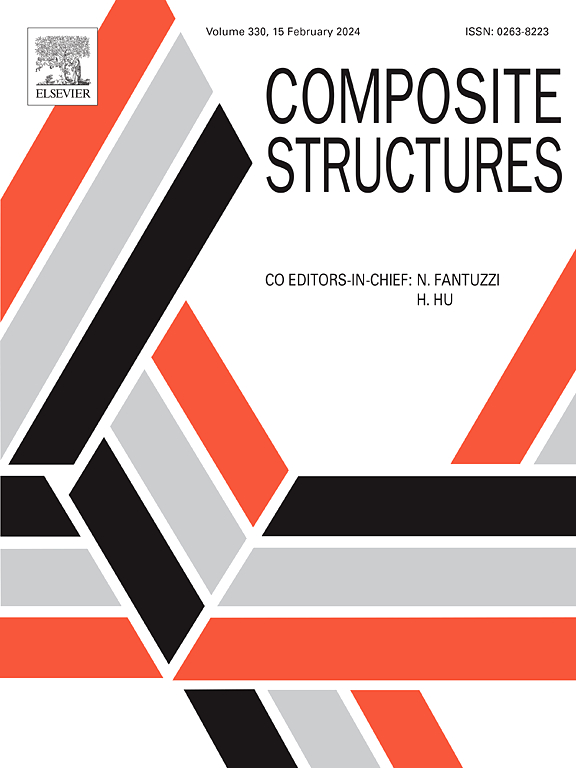Comparative analysis of micro-hole drilling characteristics on 2D-Cf/SiC and UD-Cf/SiC composites
IF 6.3
2区 材料科学
Q1 MATERIALS SCIENCE, COMPOSITES
引用次数: 0
Abstract
Carbon fiber-reinforced ceramic matrix composites (Cf/SiCs) possess high hardness and anisotropic properties, leading to rapid tool wear and poor hole quality during micro-hole machining. To address this issue, mechanical properties tests and drilling tests were conducted on two-dimensional (2D)-woven Cf/SiCs and unidirectional laminated Cf/SiCs (UD-Cf/SiCs). Micro-Vickers hardness indentation test results revealed that the hardness of perpendicular fibers was 29.5% higher than that of transverse fibers. The shear strength test revealed that the interlaminar shear strength of 2D-Cf/SiCs was 15.6% higher than that of UD-Cf/SiCs. Vertical to transverse fibers (VD) and parallel to transverse fibers (PD) drilling tests showed that the hole exit damage factor for 2D-Cf/SiCs was 15.5% smaller in VD drilling but 4.8% larger in PD drilling compared to UD-Cf/SiCs. Furthermore, 2D-Cf/SiCs exhibited lower hole wall surface roughness. Experiment highlighted differences in the removal mechanisms at various fiber orientation angles, revealing ductile, ductile–brittle, and brittle removal regions. Notably, two carbon fiber removal mechanisms during brittle removal were identified: fiber debonding from the SiC matrix and internal crack propagation leading to fiber fracture. The carbon fiber chips generated during the drilling of UD-Cf/SiC were longer than those produced from 2D-Cf/SiCs. Moreover, polycrystalline diamond drill primarily experienced abrasive wear, chipping, and minor chip attachment.
求助全文
约1分钟内获得全文
求助全文
来源期刊

Composite Structures
工程技术-材料科学:复合
CiteScore
12.00
自引率
12.70%
发文量
1246
审稿时长
78 days
期刊介绍:
The past few decades have seen outstanding advances in the use of composite materials in structural applications. There can be little doubt that, within engineering circles, composites have revolutionised traditional design concepts and made possible an unparalleled range of new and exciting possibilities as viable materials for construction. Composite Structures, an International Journal, disseminates knowledge between users, manufacturers, designers and researchers involved in structures or structural components manufactured using composite materials.
The journal publishes papers which contribute to knowledge in the use of composite materials in engineering structures. Papers deal with design, research and development studies, experimental investigations, theoretical analysis and fabrication techniques relevant to the application of composites in load-bearing components for assemblies, ranging from individual components such as plates and shells to complete composite structures.
 求助内容:
求助内容: 应助结果提醒方式:
应助结果提醒方式:


